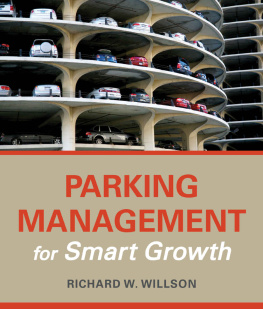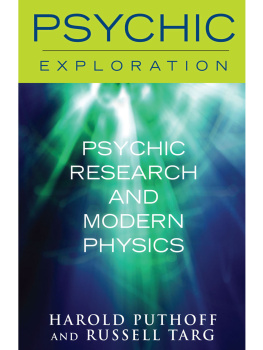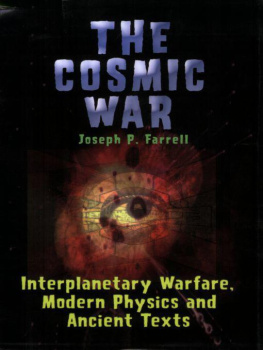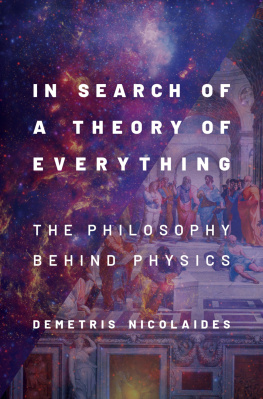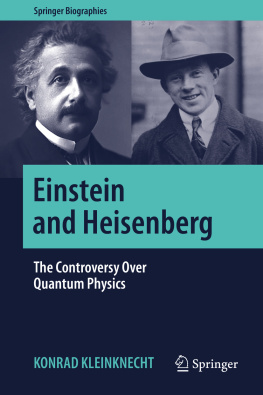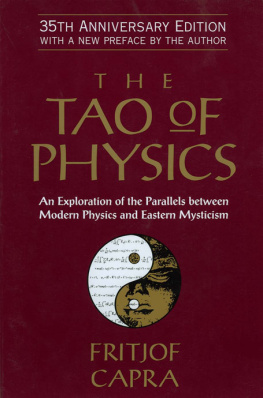Willson - Ancient and Modern Physics
Here you can read online Willson - Ancient and Modern Physics full text of the book (entire story) in english for free. Download pdf and epub, get meaning, cover and reviews about this ebook. City: Luton, year: 2012, publisher: Andrews UK;AUK Classics, genre: Religion. Description of the work, (preface) as well as reviews are available. Best literature library LitArk.com created for fans of good reading and offers a wide selection of genres:
Romance novel
Science fiction
Adventure
Detective
Science
History
Home and family
Prose
Art
Politics
Computer
Non-fiction
Religion
Business
Children
Humor
Choose a favorite category and find really read worthwhile books. Enjoy immersion in the world of imagination, feel the emotions of the characters or learn something new for yourself, make an fascinating discovery.

Ancient and Modern Physics: summary, description and annotation
We offer to read an annotation, description, summary or preface (depends on what the author of the book "Ancient and Modern Physics" wrote himself). If you haven't found the necessary information about the book — write in the comments, we will try to find it.
A fascinating look at the history of physics from ancient times to the beginning of the modern age. (Note: Modern in this context is the beginning of the 20th century.)
Willson: author's other books
Who wrote Ancient and Modern Physics? Find out the surname, the name of the author of the book and a list of all author's works by series.
Ancient and Modern Physics — read online for free the complete book (whole text) full work
Below is the text of the book, divided by pages. System saving the place of the last page read, allows you to conveniently read the book "Ancient and Modern Physics" online for free, without having to search again every time where you left off. Put a bookmark, and you can go to the page where you finished reading at any time.
Font size:
Interval:
Bookmark:
ANCIENT AND MODERN PHYSICS
by Thomas E. Willson
This edited version, including layout, typography, additions to text, cover artwork and other unique factors is copyright 2012 Andrews UK Limited
This book is sold subject to the condition that it shall not, by way of trade or otherwise, be lent, resold, hired out or otherwise circulated without the publishers prior written consent in any form of binding or cover other than that in which it is published, and without a similar condition being imposed on the subsequent purchaser.
PREFACE
The Editor of the Theosophical Forum in April, 1901, noted the death of Mr. Thomas E. Willson in the previous month in an article which we reproduce for the reason that we believe many readers who have been following the chapters of "Ancient and Modern Physics" during the last year will like to know something of the author. In these paragraphs is said all that need be said of one of our most devoted and understanding Theosophists.
In March, 1901, The Theosophical Forum lost one of its most willing and unfailing contributors. Mr. T.E. Willson died suddenly, and the news of his death reached me when I actually was in the act of preparing the concluding chapter of his "Ancient and Modern Physics" for the April number.
Like the swan, who sings his one song, when feeling that death is near, Mr. Willson gave his brother co-workers in the Theosophical field all that was best, ripest and most suggestive in his thought in the series of articles the last of which is to come out in the same number with this.
The last time I had a long talk with T.E. Willson, he said"
"For twenty years and more I was without a hearing, yet my interest and my faith in what I had to say never flagged, the eagerness of my love for my subject never diminished."
This needs no comment. The quiet and sustained resistance to indifference and lack of appreciation, is truly the steady ballast which has prevented our Theosophical ship from aimless and fatal wanderings, though of inclement weather and adverse winds we had plenty.
For many long years Mr. Willson was the librarian of the New York "World." In the afternoons he was too busy to see outsiders, but, beginning with five o'clock in the afternoon until he went home somewhere in the neighbourhood of midnight, he always was glad to see his friends. He had a tiny little room of his own, very near the top of the tremendous building, his one window looking far above the roofs of the tallest houses in the district. There he sat at his desk, generally in his shirt sleeves, if the weather was at all warm, always busy with some matter already printed, or going to be, a quiet, yet impressive and dignified figure.
The elevated isolation, both figuratively and literally speaking, in which T.E. Willson lived and worked, in the midst of the most crowded thoroughfares of New York, always made me think of Professor Teufelsdrockh on the attic floor of "the highest house in the Wahngasse." The two had more than one point of resemblance. They shared the loftiness of their point of view, their sympathetic understanding of other folks, their loneliness, and, above all, their patient, even humorous resignation to the fact of this loneliness.
Yet in his appearance Mr. Willson was not like the great Weissnichtwo philosopher. In fact, in the cast of his features and in his ways, Mr. Willson never looked to me like a white man. In British India I have known Brahmans of the better type exactly with the same sallow complexion, same quick and observant brown eye, same portly figure and same wide-awakeness and agility of manner.
Last summer I heard, on good authority, that Mr. Willson had thought himself into a most suggestive way of dealing with the problems of matter and spirit, a way which, besides being suggestive, bore a great resemblance to some theories of the same nature, current in ancient India. Consequently Mr. Willson was offered, for the first time in his life, a chance of expressing his views on matter and spirit in as many articles and in as extensive a shape as he chose. The way he received this tardy recognition of the fact that he had something to say was highly instructive. He did not put on airs of unrecognized greatness, though, I own, the occasion was propitious; he did not say, "I told you so;" he simply and frankly was glad, in, the most childlike way.
And now that I have used the word, it occurs to me that "childlike" is an adjective the best applied to this man, in spite of his portliness, and his three score and more winters.
Many a pleasant hour I have spent in the small bookroom of the great "World" building. With Mr. Willson talk never flagged. We discussed the past and the future of our planetary chain, we built plans for the true and wholesome relation of sexes, we tried to find out - and needless to say never did - the exact limit where matter stopped being matter and became spirit; we also read the latest comic poems and also, from time to time, we took a header into the stormy sea of American literature in order to find out what various wise heads had to say, consciously or unconsciously, in favour of our beloved Theosophical views. And all this, being interrupted every three minutes or so by some weary apparition from some workroom in the "World" with some such question: "Mr. Willson, how am I to find out the present whereabouts of this or that Russian man-of-war? Mr. Willson, what is the melting point of iron? Mr. Willson, when was `H.M.S. Pinafore' produced for the first time?" etc., etc. And every time, Mr. Willson got up in the leisurely manner peculiar to him, reached for some book from the shelves that lined the room, gave the desired information, and as leisurely returned to the "pranic atom," or to "come and talk man talk, Willy," or to whatever our subject chanced to be at the time.
Mr. Willson's gratitude to the Theosophical Forum for its recognition was disproportionately great. As he wrote to the Editor: "give me any kind of work, writing for you, reviewing, manuscript or proof reading, I shall do anything, I shall undertake any job, even to taking editorial scoldings in all good nature, only give me work." His devotion to Theosophical thought and work in all their ramifications was just as great, as was his freedom from vanity, his perfectly natural and unaffected modesty.
At the news of his death many a heart was sincerely sad, but none so sad as the heart of the editor of the Theosophical Forum. For a friend and co-worker like T.E. Willson, ever ready to give material help and moral encouragement, is not easily replaced.
For a soul so pure of any kind of selfishness the transition from the turmoil of life to the bright dreams of death must have been both easy and enviable.
Chapter One
The Physical Basis if Metaphysics
The Hindu system of physics, on which the metaphysical thought of the East is based, does not in its beginnings differ widely from the latest physics of the West; but it goes so much farther that our physics is soon lost sight of and forgotten. The Hindu conception of the material universe, taken from the Upanishads and some open teaching, will serve for an illustration. They divide physical matter into four kinds - prakriti, ether, prana, and manasa - which they call "planes." These differ only in the rate of vibration, each plane vibrating through one great octave, with gulfs of "lost" octaves between. The highest rate of vibration of prakriti is measured by the thousand, the lowest of the ether by trillions, and the lowest of prana by - never mind; they have, and we have not, the nomenclature.
The earth, they teach, is a globe of prakriti, floating in an ocean of ether, which, as it has the sun for its center of gravity, must necessarily be a globe. This etheric sun-globe has a diameter of over 300,000,000,000 miles. All the planets revolve around the sun far within its atmosphere. The etheric sun-globe revolves on its axis once in about 21,000 years, and this revolution causes the precession of the equinoxes. This etheric sun-globe is revolving around Alcyone with other etheric globes having suns for their centers and solar systems of prakritic globes within them in a great year of 5,640,000,000 of our common years. Its orbit has a diameter of 93,000,000,000,000,000 miles.
Next pageFont size:
Interval:
Bookmark:
Similar books «Ancient and Modern Physics»
Look at similar books to Ancient and Modern Physics. We have selected literature similar in name and meaning in the hope of providing readers with more options to find new, interesting, not yet read works.
Discussion, reviews of the book Ancient and Modern Physics and just readers' own opinions. Leave your comments, write what you think about the work, its meaning or the main characters. Specify what exactly you liked and what you didn't like, and why you think so.



